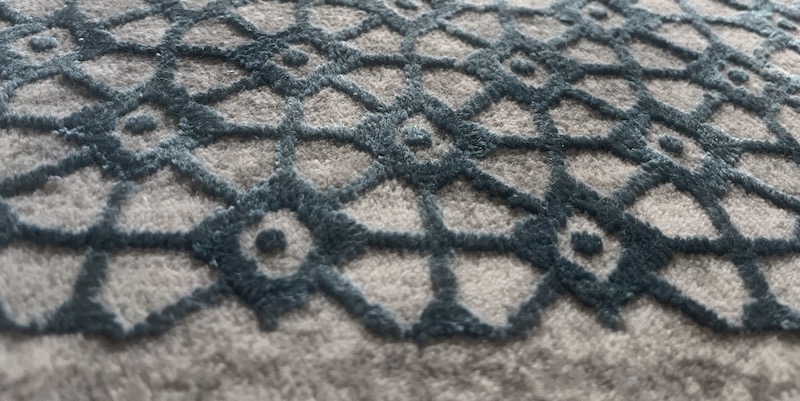Interview with Mrs Narges Ghorbanalizadeh
By: Mena Carpet News
First of all, please let us know more about your biography and your experience in the carpet industry and carpet design.
I have been a carpet designer since 2010. I first started designing carpets at a company called “Mohtasham Carpets”, in Iran, where I learnt about drawing classic motives, shadows and colors. After that, I worked for “Negin Mashhad” as a Manager, responsible for the design process for a unit of five staff members. In 2018 I came to Türkiye for my new journey in carpet designing, where I have worked for “Durkar”, where I was introduced to more modern style designs. I learnt about Turkish-style carpets there. Since then, I’ve moved to “Artemis”, followed by “Empera”. Currently, I’m the Lead Designer at Empera, utilizing both my designing skills for classical as well as modern designs.
In general, how do you evaluate machine made carpet sector in Turkey?
The machine-made carpet industry in Turkey is well-developed. The raw materials are produced in the country with high quality and standards. The quality of the prints is generally of the lower number of pixels (48 reeds), which makes it more suitable for international markets in the US and in Europe.
Turkish machine-made carpet export is around 2.5 billion dollars and carpets made in Turkey is a reliable brand for international buyers and traders. Turkish machine-made carpet export statistics show solid growth in the last decade. now Gaziantep city in Turkey is well known as the heart of carpet production and export in the world.
The emphasis within the Turkish carpet design industry is on Modern-style carpets of general purpose for a wide, international market.
How do you draw a new and creative carpet design suitable for the market?
It depends first of all on which country/industry I am designing. This influenced the choice of colors and style, mostly. For example, generally, Arab-speaking countries prefer the colors green and red, as well as Classic designs. In Europe, they like more modern designs with light and soft colors.
What are the differences between carpet design for Turkey’s domestic market, and designs for the international export market?
For the domestic market, normally Turkish families prefer classical designs with light colors, or modern designs that have borders. For the international markets, we try to study our target export market and according to the end users’ needs creat new and suitable designs but in general international buyers especially in Europe and USA prefer abstract, vintage and modern designs.
Many People and students are interested to being carpet designer, how we can be creative carpet designer?
This question is a little difficult to follow. However, the eight steps to becoming a good (classical) carpet designer are as follows:
1) Having a background in arts,
2) Developing feelings for shapes and colors,
3) Need in-depth knowledge of all the different oriental, classic and modern styles of carpets and motives
4) Start copying famous designs to learn the motives,
5) Learn more about color styles,
6) Start doing your own creative designs,
7) Need to learn about materials, how the machines operate and produce carpets, as well as knowledge about (different types of yarn),
8) Learn how to make a palette for different styles of designs.
What is the difference between carpet design for tufting carpets, digitally printed carpets and machine-made carpets?
For machine-made, there are more limited reeds, density, and colors. For digital, there are no limitations on colors, but limits on materials (i.e., only those that can be printed). Personally, I have limited experience with tufting, so I would have nothing to add on this point.
What are the copywriting term and conditions rules in Turkey? Is it enough to protect your idea and designs?
There are legal instruments to protect your intellectual property, but the process takes too long to be effective. Usually, copies can still make it to the markets before a case is officially closed. Hence, it is not used very often and offers limited protection for carpet designers.
9- As an Iranian designer who works in both Iran and Turkey countries, how do you compare machine made carpet industry in Iran and Turkey?
In Iran, there is a much heavier focus on the local market and classical designs, due to export controls. In Turkey, there is really a demand for both, and the local industry is much more geared towards the international market. Iranian machine-made carpet mostly focuses on high-density and expensive carpets and using Acrylic carpet yarns, but in Turkey, you can find a vast variety of carpets with different densities and different surface materials.
it is obvious that Turkish companies developed relationships with their European and international partners providing them a better understanding of international market demand but unfortunately in Iran, the manufacturers have limited trade relations with abroad due to sanctions and political situations in last 4 decades.



















